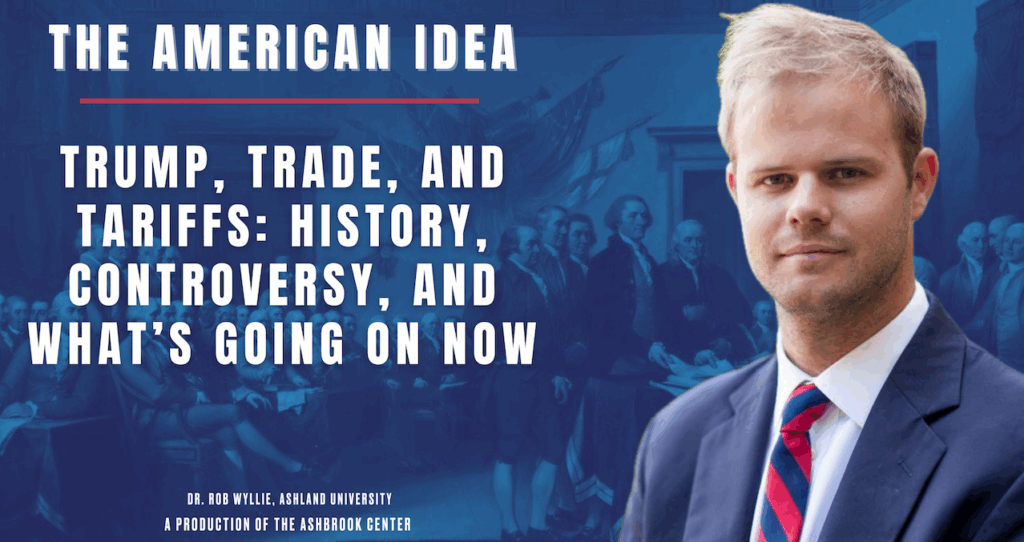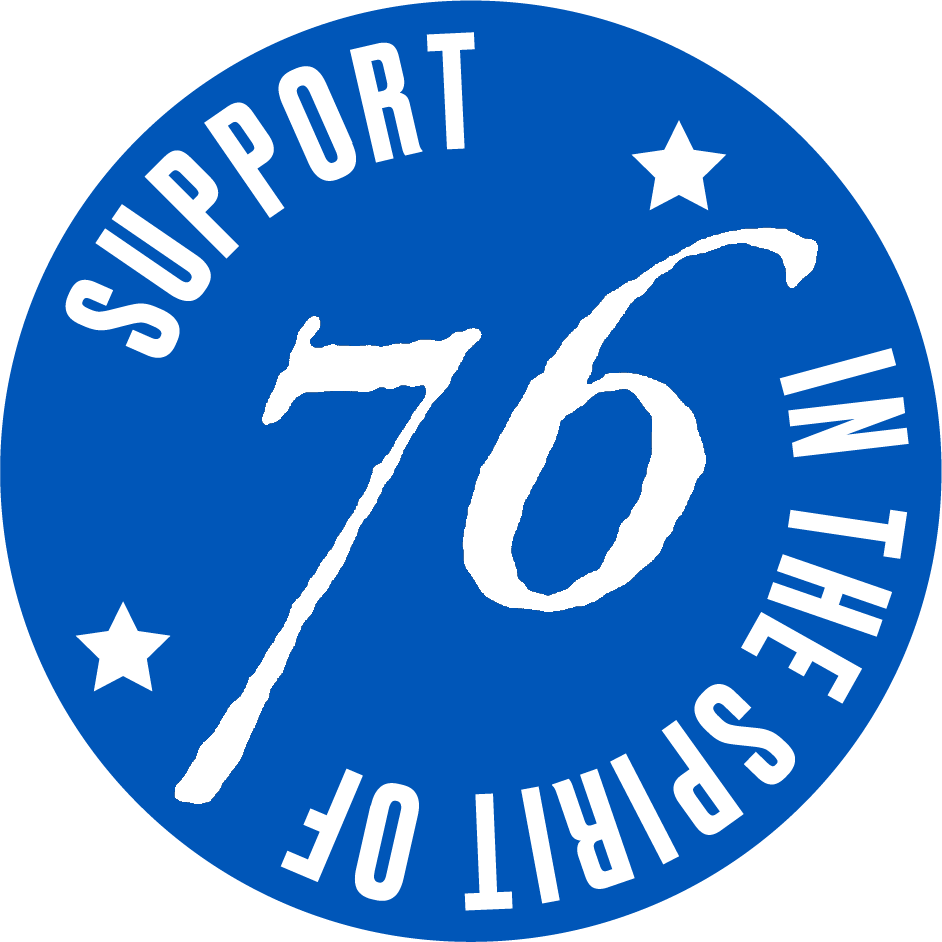Trump, Trade, and Tariffs
May 14, 2025

Listen and subscribe to the podcast
Join The American Idea’s Listener Email list – get news about upcoming episodes and a chance to offer questions for them, too!
In this episode, we explore the complex world of international trade policy, with a particular focus on tariffs—those taxes on imported goods that have shaped American economic history since the nation’s founding. As trade tensions escalate globally in early 2025, understanding the historical context and modern implications of tariffs becomes increasingly important for citizens navigating today’s economic landscape.
The Pendulum of Protectionism
The story of American tariffs reads like a pendulum swinging between protectionism and free trade over centuries. In the nation’s infancy, Alexander Hamilton advocated for protective tariffs to nurture domestic manufacturing against British competition, while Thomas Jefferson opposed them, concerned they would harm the agricultural South’s export economy. This regional tension over tariffs—with the industrial North favoring protection and the agricultural South opposing it—would eventually contribute to the divisions leading to the Civil War.
By the late 19th century, tariffs became central to political identity, with President William McKinley championing them as shields for American workers against cheap foreign labor. The pendulum swung dramatically in 1930 with the infamous Smoot-Hawley Tariff, which raised import prices during the early Great Depression. Rather than protecting American jobs, many economists believe these tariffs worsened economic conditions by triggering retaliatory measures from trading partners, causing international trade to collapse further.
The catastrophic results of Smoot-Hawley prompted a decades-long shift toward free trade following World War II. The Bretton Woods Conference established a new international economic order, with the U.S. dollar as the global reserve currency and initiatives like the General Agreement on Tariffs and Trade (later evolving into the World Trade Organization) systematically reducing trade barriers. This postwar consensus favoring trade liberalization would dominate American economic thinking until recent years.
From Simple Taxes to Complex Barriers
The modern trade landscape bears little resemblance to the straightforward tariff debates of earlier centuries. Today’s international commerce faces a labyrinth of non-tariff barriers (NTBs)—arbitrary health inspections, vague regulations, and technical standards that create unpredictable obstacles for cross-border business. Ironically, the World Trade Organization has recognized that these opaque measures can be more disruptive than traditional tariffs, with some businesses preferring the predictability of a known tax rate over the uncertainty of byzantine regulatory processes.
Another significant shift occurred with China’s admission to the WTO in 1995, which reflected optimistic expectations that economic integration would foster political reforms within China. As these hopes largely went unrealized, American policymakers began reconsidering the assumptions underlying decades of trade liberalization. Meanwhile, environmental concerns entered the conversation, with carbon emissions and sustainability standards adding new layers of complexity to international trade relations.
The motivations for imposing tariffs have evolved as well. Historically, they served three primary purposes: generating government revenue (critical before income taxes), restricting imports to protect domestic industries, and reciprocating against protectionist measures by trading partners. In today’s economic environment, revenue generation has become largely irrelevant, while protectionism and reciprocity remain powerful drivers of trade policy—though often clouded by political rhetoric that obscures the true intentions behind tariff decisions.
The Presidential Tariff Power
Perhaps the most consequential development in American trade governance has been the dramatic shift of authority from Congress to the presidency. While the Constitution explicitly grants Congress power over foreign commerce, a series of delegations since 1934 has empowered presidents to impose tariffs unilaterally. This transformation—allowing a single individual to make sweeping trade decisions without extensive debate—represents a profound change in how America conducts trade policy.
The concentration of tariff authority in the executive branch brings both benefits and concerns. On one hand, it enables rapid responses in a world where trading partners like China can implement retaliatory measures almost instantly. On the other hand, it bypasses the deliberative process that might otherwise ensure tariff decisions receive proper scrutiny and reflect diverse economic interests across the country. This dynamic has contributed to the volatility of modern trade policy, with presidential tweets and announcements capable of triggering immediate market reactions worldwide.
When significant tariffs are announced—such as a hypothetical 145% duty on Chinese goods—the effects ripple through global supply chains and financial markets. Companies must quickly recalculate costs and risks, investors recalibrate portfolios, and consumers prepare for potential price increases. This uncertainty creates economic friction beyond the direct impacts of the tariffs themselves, complicating business planning and sometimes exacerbating existing inequalities between regions and industries.
The New Economic Sectionalism
The contemporary resurgence of tariffs reflects deeper currents in American politics—particularly a growing division between regions that have flourished in the globalization era and those that have struggled. Areas like the Rust Belt, where manufacturing employment has declined significantly, often view tariffs as potential saviors for local economies. This geographic polarization creates a new form of economic sectionalism reminiscent of the North-South divide that characterized early tariff debates.
Political leaders have increasingly tapped into this regional resentment, portraying tariffs as solutions to economic dislocation rather than addressing more complex structural challenges in the economy. Yet this approach risks creating short-term political gains at the expense of coherent long-term economic policy. The fundamental tension between protecting vulnerable industries and maintaining beneficial trade relationships remains unresolved, with tariffs serving as blunt instruments in what requires nuanced solutions.
As we look ahead, the future of American trade policy remains uncertain. While presidential administrations may continue embracing tariffs as political tools, practical economic realities will likely necessitate more balanced approaches eventually. The complex global economy cannot function effectively under extreme protectionism, nor can domestic industries survive unprotected against unfair foreign competition. Finding this balance—protecting American workers while maintaining productive international economic relationships—represents one of the central economic challenges of our time.

